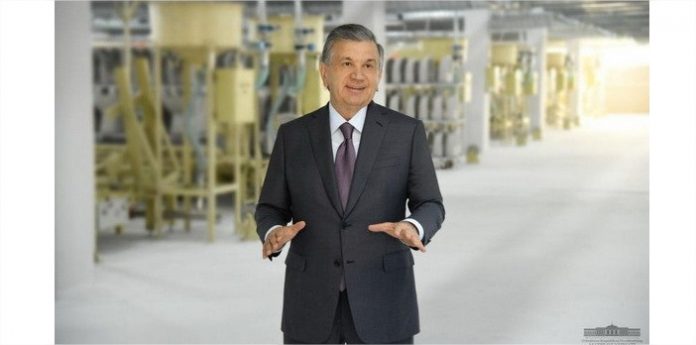Tashkent, Uzbekistan , JUNE 6 — Localization, development of competition, job creation and sources of income are the essence of the economic policy of Uzbekistan. These components are taken into account when creating enterprises.
Ecokerama, established in Fergana region, is among them.
During a visit to this company, President Shavkat Mirziyoyev noted that Uzbekistan is rich in minerals, but a large number of materials that could be produced on their basis are imported from abroad.
For example, there are deposits of calcite in Andijan region, in Samarkand – quartz, in Tashkent region – kaolin, in Kashkadarya – feldspars, and in Fergana – dolomite. Nevertheless, about 650 thousand units of sanitary products are imported to Uzbekistan annually.
The President has a fair question: we have so many opportunities, but whom do we feed? Isn’t it better to feed our people? Every inch of land, every wealth of our country should serve to increase per capita income, the Head of the state emphasized.
Ecokerama is capable of producing 500 thousand units of sanitary products a year and replacing a significant portion of imports. Moreover, the Central Asian market of sanitary ware is estimated at US$50 million. It is planned to increase the capacity of the enterprise and export 60 percent of its products. Thanks to the use of entirely local raw materials and energy-saving technologies, Ecokerama products will be cheaper than their foreign counterparts.
The estimated cost of the enterprise is US$15 million, including US$11 million of direct investment. Currently, 500 people are working here, a test batch of products has been released.
The President emphasized the need for turning the enterprise into a cluster, allocation of quarries and providing it with at least a 30-year supply of raw materials. Instructions were given on assisting the enterprise in the sale of products, in particular, opening branded stores in the building materials markets, using Ecokerama plumbing products at government-built facilities. In turn, the company is recommended to expand the range of products, open similar enterprises in other regions and employ more youth.
Presentation of investment projects planned for the implementation in Fergana region was also held here. So, as a result of those outlined in the light industry, the volume of processing cotton fiber will increase sharply. This year, the yarn processing level will reach 56 percent, and next year – 71 percent. The US$80 million cotton fiber previously harvested by the region was sold as ordinary raw materials, but this year it is planned to export finished products worth about US$314 million. It is supposed to increase this figure to 540 million in 2021 and up to US$1 billion in the future.

















